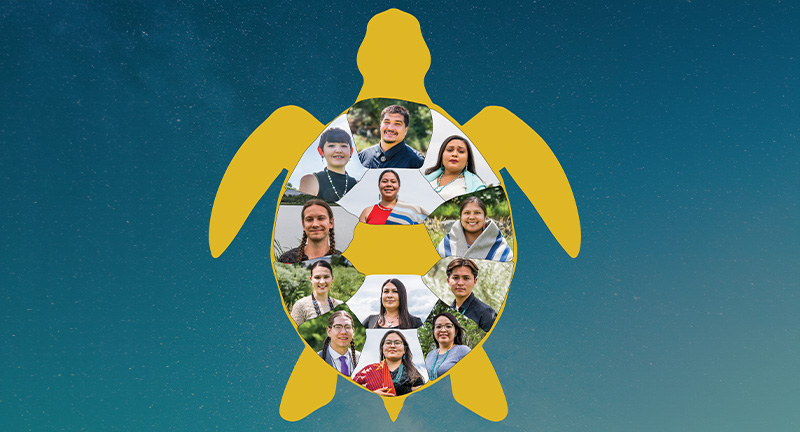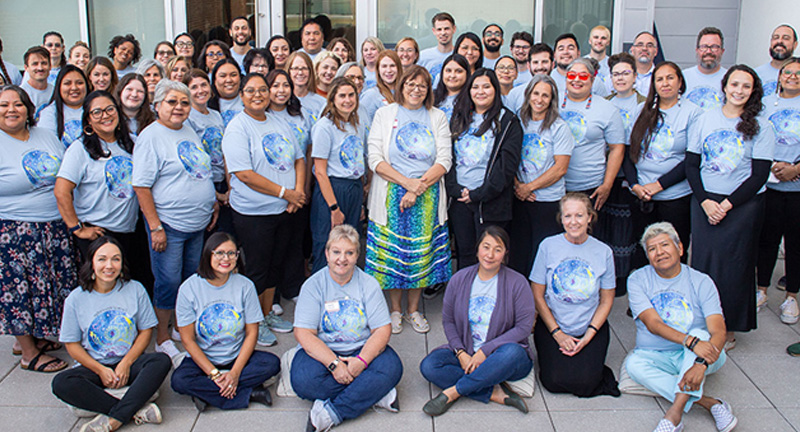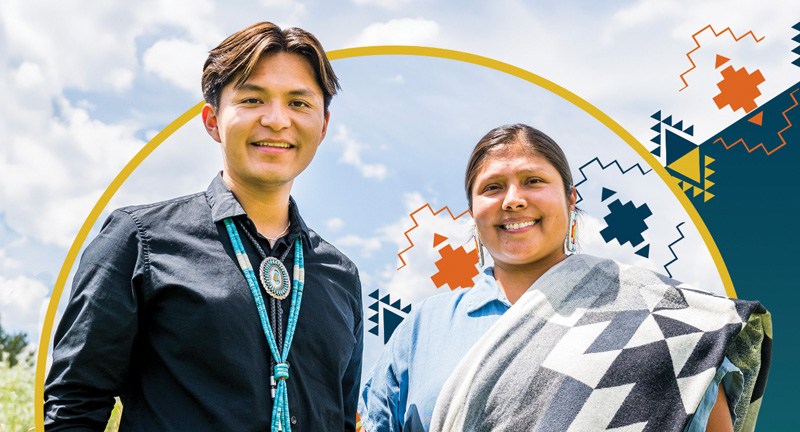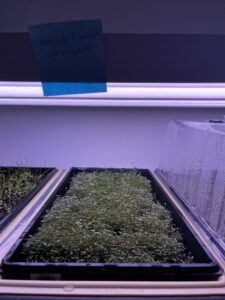
Monara fistulosa (Wild Bergamot) – the Sahnish name is kahaahtatpaxsa ’u. The Hiracca name is maa’aruboobaruuwa or mnitapópadusa. Some uses would be perfume, ceremonial, cosmetic, and medicinal uses for animals and humans.
By Shadlynn Severance, Indigenous Visionaries Fellow
Dosha, maabehe cigic. Madashi Shadlynn Severance heec. I come from Parshall, North Dakota, where I live with my dad, mom, little brother, and cat named Princess. I have a sister, and she and her boyfriend have two wonderful boys. I am attending Nueta Hidatsa Sahnish College (NHSC) and am majoring in environmental science. I will be graduating with my Associate of Science degree in environmental and general science in May 2023. I previously earned an administrative assistant certificate at Bismarck State College in May 2022.
I am a student of the Hidatsa language and work as a research assistant under Dr. Kerry Hartman, the advisor for the environmental science program. My goal is to assist in the New Town, North Dakota community garden, also known as the Four Sisters Garden. In Native culture, many of the plants have medicinal properties which can treat mild symptoms of illnesses. Since the pandemic, my community has struggled with shortages of medicine and food. Anyone can try growing plants, whether for fresh produce or medicine.
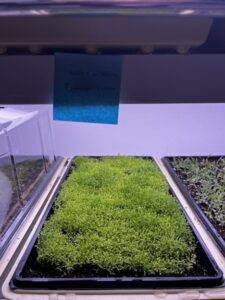
Achillea millefolium L. (common yarrow). The Sahnish name is sakuxts. The Hiracca name is chih pa kishshe (prairie dog’s tail). Common yarrow has both ceremonial and medicinal importance.
Along with issues such as the climate crisis and increased mental health struggles in my community, I am also focused on caring for my own mental health and healing to be grounded, spend time with nature, learn to bead, paint, and focus on my journaling. I always feel so much better when I am outside, tending gardens and being with plants. I am thankful to NHSC for showing me more of my culture and helping me find my passion for Native plants. I am excited to share what I have learned.
I chose my Native Plant Revival Project because I love plants and have a passion for the environment. As an environmental science student, I learned about the benefits of native plants and what they can do for the ecosystem overall. Not only do they benefit the environment around them but they also have numerous connections to Indigenous people, including medicinal, ceremonial, ritual, nutritional, and utility. I have grown to appreciate the many ways plants provide for not only humans, but every creature and organism. I hope I can share my knowledge and instill this same passion in others.
Appreciating native plants is vital for their regenerative growth. I first enrolled in the ethnobotany course in fall 2021 with instructor Tanya Sand-Driver. She inspired me to keep studying and to appreciate the plants around me. The course gave me a different outlook on what’s around me and the multiple uses for plants that are essential to Native life.
Prior to establishing my community-based project I was looking into the benefits of Native plants, and found several ways they can be helpful. They help with pollinator restoration, have symbiotic relationships with certain animals, tend to have a strong root system which helps the soil, improve water quality, conserve water, and preserve the natural biodiversity of areas. Restoring Native plants has multiple benefits for the environment and humans.

Echinacea angustifolia (purple coneflower). The Sahnish name is • šapitaahákUx or šapitaaRAhákUx. The Hiracca name is xopadi taidia. The purple coneflower has medicinal properties.
Robin Wall Kimmerer, an enrolled member of the Citizen Potawatomi Nation, scientist, professor, mother, and nationally recognized author who founded and directs the Center for Native Peoples and the Environment, wrote in her book Braiding Sweetgrass: Indigenous Wisdom, Scientific Knowledge and the Teachings of Plants, “Knowing that you love the earth changes you, activates you to defend and protect and celebrate. But when you feel that the earth loves you in return, that feeling transforms the relationship from a one-way street into a sacred bond.” She also wrote, “We need acts of restoration, not only for polluted waters and degraded lands but also for our relationship to the world. We need to restore honor to the way we live so that when we walk through the world, we don’t have to avert our eyes with shame so that we can hold our heads up high and receive the respectful acknowledgment of the rest of the earth’s beings.” These quotes reflect my perspective on the environment, how I feel about my Indigenous culture, and my philosophy that one should give and not take so much from the Earth.
Stepping out of your comfort zone is challenging. But making an effort in what you are passionate about feels great and the journey of facing fears and doing what you love with the community is rewarding. And when doing so can have a positive impact on your local environment it is remarkable. Communicating with community members and seeing how everyone wants to get involved is gratifying. Taking the first step in restoration is a milestone for our community.




